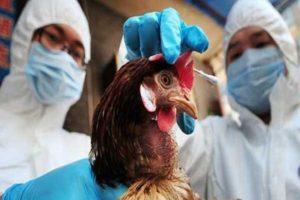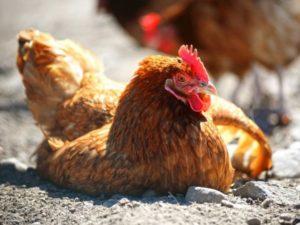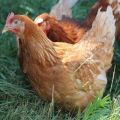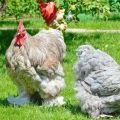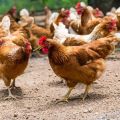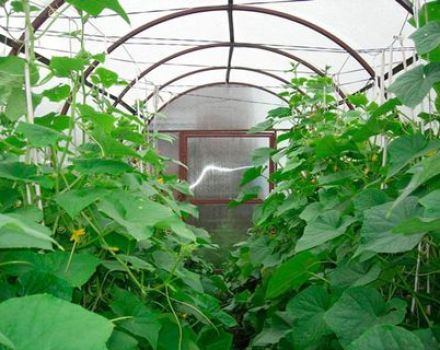How to treat dropsy in chickens, causes and symptoms of poultry disease
Poultry farmers often have to deal with various diseases that affect birds. Dropsy in chickens is found on poultry farms all over the world; it affects about 10% of the world's domestic birds. Therefore, it is important for farmers to learn to recognize pathological changes in order to take timely and adequate measures. Treat dropsy with medicines or folk remedies.
Causes of dropsy in chickens
Previously, poultry farmers thought that dropsy was a hereditary disease. Breeders have tried to create breeds that are immune to pathology, but in vain. The accumulation of fluid in the stomach has been noted in birds of all breeds: both long-existing and recently bred.
Today it is known that dropsy is not an independent disease, but a sign of other pathologies in the avian body, including metabolic disorders and hypovitaminosis. If a bird has a swollen belly, then one should suspect:
- violation of the body's water-salt balance;
- transferred intestinal pathologies;
- intestinal obstruction;
- disruption of the heart muscle;
- pathological changes in the kidneys and liver.
Chickens of all ages fall ill with dropsy: both broiler chicks and layers.
In layers, dropsy is observed mainly in old age, when the period of oviposition ends, and it is associated with wear and tear of the liver.
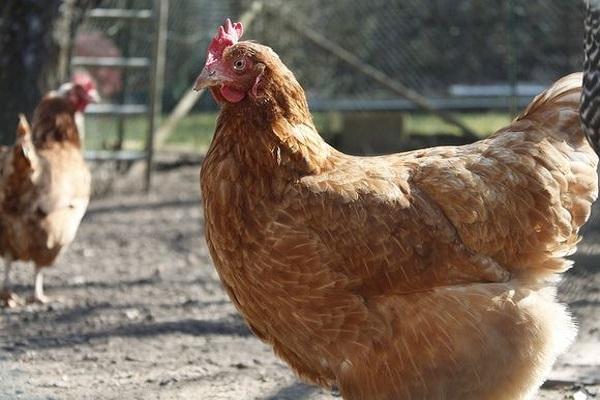
In young broilers, the digestive tract poorly digests food, since the acidic environment is not fully formed in the stomach. The poorly digested mass, having passed into the intestine, is not absorbed, nutrients do not enter the bloodstream, but remain in the tract, as food for putrefactive bacteria.
Pathogenic microorganisms, as a result of vital activity, produce toxins that negatively affect the heart, kidneys, and liver. Blood stagnates in blood vessels, fluid accumulates in the belly. This is how dropsy develops.
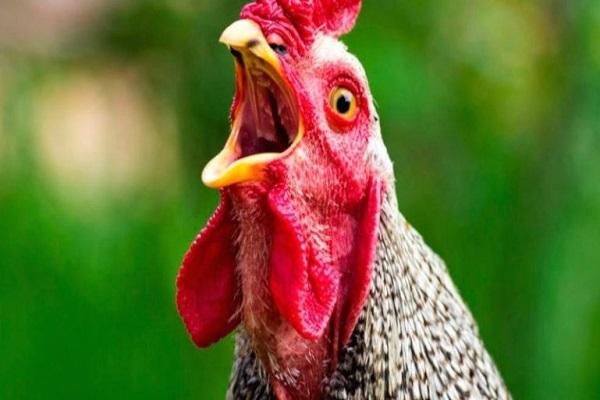
The main symptoms
Chickens develop dropsy of a specific type - the abdominal cavity. With this type, a significant amount of fluid accumulates in the bird's belly. The disease is manifested by the following symptoms:
- visual increase in the belly of the chicken;
- unnatural shape of the abdomen;
- lethargic, sedentary state of the bird, finding it mainly in a sitting position;
- shortness of breath;
- tension of the paws when walking.
The disease is accompanied by severe abdominal pain, although the body temperature of the affected individual remains normal. Dropsy is not contagious to other inhabitants of the chicken coop.

Diagnosis of the disease
It is not difficult to understand that a chicken has dropsy. You just need to press your fingers on your stomach. In case of illness, it is tense, and under the fingers there is a rolling of fluid.
What to do if a chicken's belly is swollen?
An effective way to deal with dropsy has not yet been created. Usually veterinarians advise to kill the sick individual immediately. But some farmers feel sorry for slaughtering poultry ahead of time, in which a lot of money and labor have been invested. In this case, you can relieve the torment of the chicken, for this, medicines and folk methods are used.
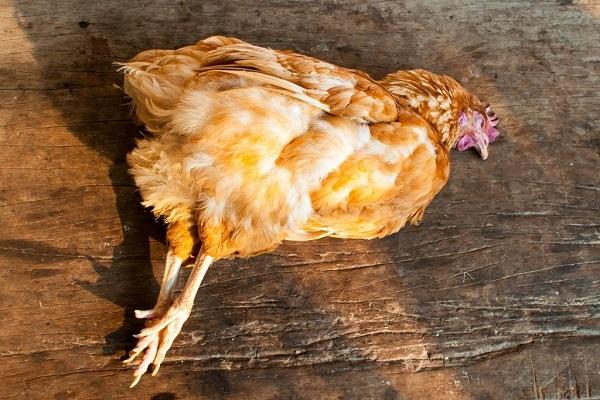
Drug therapy
If dropsy is the result of an infectious disease transferred by a chicken (for example, salmonellosis), then the best treatment option is the use of acidifiers. These drugs:
- destroy pathogenic microflora found in food and drink;
- normalize digestive function;
- restore healthy intestinal microflora.
It is better to consult a veterinarian about the choice of an acidifier. Most often used:
- medications of the DrSintes series;
- Animaltsid (in dissolved or dry form);
- Baracid;
- Selko Acid;
- Novibak (in the form of a solution);
- feed additives of the Mixodec series (a mixture of acids of different concentrations for chickens of all ages).
These drugs will not cure a sick chicken, but they will ease the condition. But the use of acidifiers prevents the appearance of infectious intestinal pathologies in other chickens.
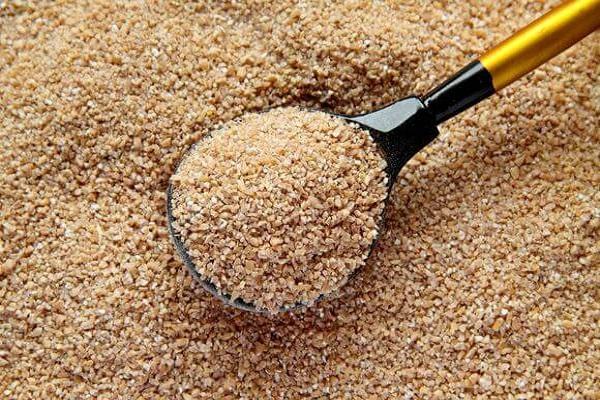
Traditional methods
There are two popular methods of dealing with dropsy:
- belly puncture;
- soldering off a sick individual with decoctions of diuretic herbs (bearberry, St. John's wort, milk thistle).
After using any method, the diet of chickens is enriched with vitamins and minerals:
- ascorbic acid (vitamin C) - cabbage, tomatoes, peppers are added to the feed;
- phylloquinone (K) - food is enriched with green ingredients (salad, celery);
- calcium (its sources are oats, barley, peas).
In winter, the vitamin and mineral complex can be purchased at the pet store.
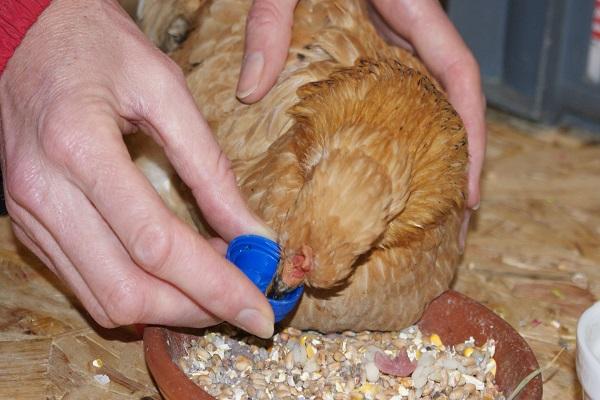
Treatment regimen
Treatment should be careful, it is important not to worsen the condition of sick chickens. Therefore, it is worthwhile to talk in detail about the methods of dealing with dropsy so that farmers do not make mistakes.
Acidifiers
On the packaging of acidulants of all brands, detailed instructions for using the drug are written. All instructions practically do not differ from each other, the drugs work according to the same scheme. The differences are only in dosages and minor nuances of use.
General principle of using acidifiers:
- in the summer, 1000 kg of ready-made poultry feed is combined with 3 kg of the drug (according to this ratio, you can calculate the amount of acidifier for any volume of food);
- in the winter months, the concentration of the drug decreases, 1000 kg of feed and 2 kg of the drug are mixed (if you plan to use an acidifier in liquid form, then 1 ml of the substance must be taken for 1 liter of water).
Acidifiers are completely harmless to the body of birds; they do not accumulate in their tissues and organs.
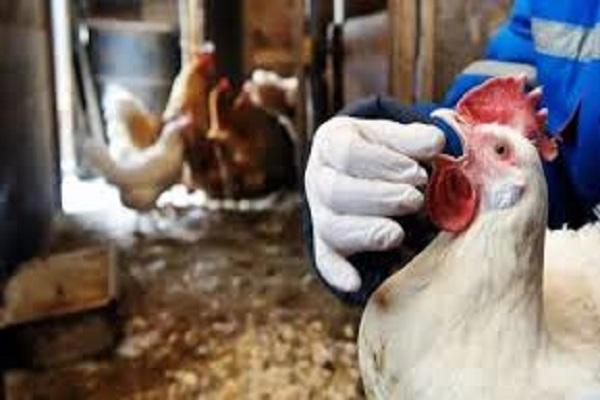
Puncture of the abdominal wall
Many farmers are skeptical about belly piercing. Inexperienced farmers do not risk doing this procedure for fear of harming the birds. If there is any doubt that it will be possible to carry out the manipulation correctly, then it is better to contact a veterinary clinic.
For farmers who have decided to fight dropsy on their own, instructions are given on piercing the belly of a chicken:
- you need to take a large needle, sterilize it well in boiling water or an antiseptic solution;
- take a sick individual, try to calm her down;
- ask for help from a person nearby (one is holding the bird, the second is performing the operation);
- gently insert the needle into the abdomen, draw out the liquid from the abdominal cavity with a syringe.
After surgery, the chicken stays in an isolated room for several days. She needs to calm down and recover. The water in the drinking bowl is diluted with diuretic solutions.
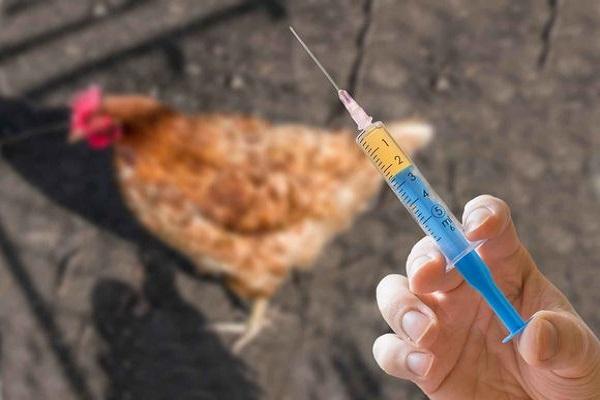
Consequences of the disease
The poultry farmer must understand that dropsy of the abdominal cavity in chickens is an incurable disease. All of the above measures are short-term, they allow the bird to live a little more, but after a while the pathology returns.
The bird carrying the disease is sluggish, practically does not move, which is why venous blood stagnates in the tissues. Because of this, the sick individual dies. That is, the treatment of chickens is an unnecessary and costly measure.
Experienced poultry farmers advise not to waste time and money, but immediately send a sick individual to slaughter. After plucking, it can be seen that the surface of the carcass is grayish-blue. If cut along the belly, a large amount of yellowish mucous fluid will begin to pour out.
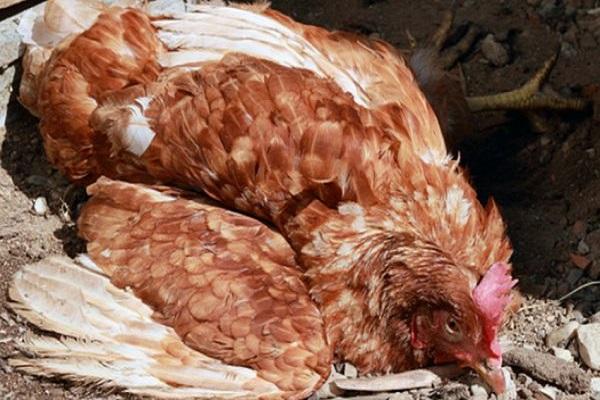
Prevention measures
Dropsy in both adult chickens and broiler chickens can be prevented by following the following prevention guidelines:
- Every 3-4 days, dissolve the Forte Universal veterinary vitamin and mineral complex in water in drinking bowls. For 1 liter of drink, consume 8 grams of the drug.
- From the first days of chickens' life, add Bifidum-SCH or other veterinary probiotic to their food. This drug helps to maintain normal microflora of the digestive tract.
- Monitor the oxygen level in the room where chickens and chickens are kept. The optimal concentration of oxygen in the air is at least 20%.
- Ventilation in the hen house should work so that air is supplied in a volume of 7 m3 per hour per 1 kg of bird weight.
The owner must equip the chickens' premises so that good air circulation is constantly maintained in them so that no harmful gases accumulate.
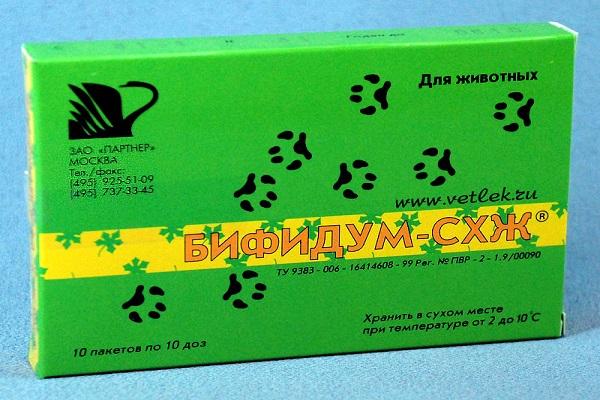
Dropsy is a non-infectious disease, harmless to the human body. Therefore, after the slaughter of sick chickens, a person can safely eat their meat. The only problem is disgust: some owners, having looked at birds with swollen bellies, cannot eat them, throw away the carcasses.
